
Auracast: A Primer
You’ve heard about it, you’re earphones may even feature it, but what is Auracast and how will it be adopted in commercial AV projects?
Text:/ Richard Neale
Auracast broadcast audio is a new Bluetooth capability defined by the Bluetooth Special Interest Group (SIG). Auracast is based on next-generation Bluetooth LE Audio underpinnings.
Bluetooth LE Audio is not the Bluetooth Classic Audio that we’ve known and used for years. It’s a new set of technologies that
- reduces power consumption
- reduces end to end latency
- supports multiple (synchronised) channels
- offers broadcast capability (removes previous 1:1 pairing restrictions)
Auracast uses a defined subset of the Bluetooth LE Audio capabilities chosen to facilitate deployment in public spaces and to maximise compatibility between products.
HOW IT WORKS
Auracast systems are made up of three elements:
Auracast Transmitter: It’s all in the name – an Auracast Transmitter transmits an Auracast signal. Auracast technology can be included into a wide range of devices to allow them to serve as an Auracast Transmitter. Examples include mobile phones, TVs, sound bars, and dedicated transmitter devices used in ProAV installations.
Auracast Receiver: Once again, it’s as simple as it sounds. An Auracast receiver can receive and ‘render’ (play) an Auracast signal. Auracast Receivers can be devices such as hearing aids, wireless ear buds, wireless headphones, etc. Most Auracast Receivers are very small, don’t have a display, and have few control inputs (knobs and buttons).
Auracast Assistant: The Auracast Assistant does not exist within the Auracast signal chain. It’s a device with a display (like a mobile phone) that communicates with an Auracast Receiver to present a list of Auracast channels available to the Auracast Receiver, and allows the user to choose which of the channels will be played. After the user has chosen a channel, the Auracast Assistant is ‘out of the loop’. The chosen Auracast channel passes directly from Auracast Transmitter to Auracast Receiver.
The Broadcast capability of the Bluetooth LE Audio technology that underpins Auracast allows an unlimited number of Auracast Receivers to tune into the signal from any Auracast Transmitter.
WHO MIGHT WANT IT
We’re already familiar with the almost limitless array of devices that include Bluetooth Classic Audio capability. Imagine how much more flexible these would all be if the 1:1 pairing relationship was removed.
In the consumer electronics world, Auracast will enable shared experiences such as:
- a whole family can listen to the TV at the same time without disturbing the neighbours
- groups can listen along to the same song or video soundtrack from one phone
- cheap wireless speakers will be easily incorporated into stereo or multi-channel systems
In the ProAV world, the applications will undoubtedly be widespread:
- a single Auracast Transmitter can distribute audio to a network of portable, powered PA speakers distributed across a small event site – no audio cabling required
- an Auracast Transmitter-equipped microphone carried by a tour guide will allow groups to hear above background noise
- in sports bars or gyms, visitors with Auracast Receivers will be able to easily choose to listen to the soundtrack associated with any one of a number of video sources
But surely one of the most important applications of Auracast will be in hearing augmentation systems.
Let’s take a deep dive into the world of hearing augmentation systems to discover whether Auracast offers something really new.
CONTEXT: HEARING LOSS
We’ve all read the horrifying statistics. The World Health Organisation (WHO) estimates that nearly 20% of the world’s people – more than 1.5 billion of us – live with some form of hearing loss. The pro AV industry – populated by people who have worked ‘on the tools’ at concerts, who love music ‘live and loud’, whose ears have been subject to years of abuse – is likely over-represented in this group of sufferers. Hearing loss is personal for many in our industry.
The WHO puts a monetary value on the costs to the global economy of unaddressed hearing loss: US$980 billion… per year.
Behind the economics lie some sad social costs: three quarters of those suffering from hearing loss will (consciously or otherwise) change their social engagement practices – to avoid situations that are compromised by poor hearing. Hearing loss can contribute to loneliness, anxiety and depression.
HEARING AUGMENTATION SYSTEMS
The Pro AV industry offers many ‘feel good’ opportunities. We make people safer in public through well-implemented emergency warning and evacuation systems.We deliver entertainment with stunning sound and images at concerts, events and in homes. We enable world-wide communications with a vast array of unified communications technologies. And we can make everyday life better (much better!) for a fifth of our fellow human beings by deploying hearing augmentation systems in public and private spaces.
Hearing augmentation systems make life better for sufferers of hearing loss by:
- allowing direct transmission of sound into the ears (through a hearing device such as a hearing aid), thus taking advantage of hearing loss compensation (amplification and equalisation) that’s been clinically calibrated by an audiologist
- minimising or eliminating the (for sufferers) debilitating effects of reverberation and background noise
These factors deliver:
- improved clarity (intelligibility)
- reduced ‘listening effort’ (fatigue)
- enhanced participation and enjoyment
to people with hearing impairments.
The Building Code of Australia (BCA) stipulates that hearing augmentation systems must be installed under a wide range of scenarios.
Architects, builders, venue owners, authorities and consultants often call up Part 5 of Australian Standard AS 1428.5 Communication for people who are deaf or hearing impaired (the Standard) to quantitatively specify systems that will meet the requirements of the BCA.
It’s easy to see these requirements as annoying ‘box ticking’ exercises – commissioning complications that delay project completion and stand in the way of collecting the money.
If you’ve ever felt that way about hearing augmentation systems, try this. Sit in the back of the room when someone with a hearing impairment comes into a space with a well set-up hearing augmentation system (there’s another whole article wrapped up in that phrase), and watch their face light up. I’ve seen tears in the eyes of people whose world, closing in under the constraints of hearing loss, is prised open again by the ability to understand, to participate, to enjoy being (and interacting) in a space. In short, to hear!
HEARING AUGMENTION TECH
The BCA and the Standard specify two broad approaches to hearing augmentation: hearing loops and receiver systems.
Hearing loops (also known as audio frequency induction loops): Hearing loops use a special (transconductance) amplifier to drive current through a wire loop installed around the space in which coverage is desired. Large spaces may require relatively complex configuration of the ‘loop’ to increase coverage. Sometimes, two amplifiers (out of phase, driving overlaying loops) are needed to deliver the desired coverage or to minimise ‘spill’ of the signal outside the coverage area.
The wire loop transmits a magnetic field to receivers that are used by hearing impaired people. Many hearing aids have a receiver built in (the receiving ‘antenna’ is called a Telecoil), which is activated using a ‘T-switch’ on the hearing aid. (Stand-alone receivers are also available, which can be used to drive headphones worn by people who don’t have a hearing aid with built-in loop receiver.)
The presence of a hearing loop receiver in many hearing aids highlights the main attraction of hearing loops: users of such hearing aids can benefit from the hearing augmentation system without requiring any additional equipment. If the hearing loop is set up and working correctly, accessing the signal is as simple as walking into the space and operating the T-switch.
And because the receivers are built into hearing aids, the Standard does not require the provision and maintenance of a fleet of receivers for people to borrow.
Hearing loops suffer from a number of down-sides:
- installation of the loop wire can be difficult and expensive – the loop wire must be precisely laid out and, depending on construction materials and techniques, may need to be embedded at very early stages of construction
- a corollary of this is that it is sometimes practically impossible (or prohibitively expensive) to retrofit a hearing loop into an existing space
- hearing loops can deliver just one, mono signal into a space
- audio quality is quite limited (frequency response rarely extends beyond 5kHz, dynamic range is compressed, the technology can only deliver a mono signal)
- magnetic interference from electrical wiring, transformers, and machinery can compromise loop performance and may make it impossible to meet standards in some spaces
- loops are not suited to secure environments: the signal is unencrypted and subject to ‘spill’ outside targeted coverage areas
RECEIVER SYSTEMS
A number of approaches have been developed to address the challenges associated with hearing loops. While the transmission technologies vary, these receiver systems share important characteristics:
- small, easy-to-install transmitters provide coverage into the desired spaces
- a dedicated receiver is provided for each user
- the receiver can drive a pair of headphones or a ‘neck loop’ that transmits a low-power magnetic signal into the user’s hearing aid (T-switch activated)
Receiver systems use various transmission technologies:
- radio frequency (RF) systems (FM or other modulation)
- infrared (IR) digital systems
- audio over IP systems based on WiFi
The ease-of-installation benefits of receiver systems are balanced by a few considerations:
- receivers are not built into hearing aids, so a fleet of receivers must be available (charged and maintained) in covered spaces – generating an ongoing system management burden
- user convenience is compromised by the need to find the place for borrowing a receiver (and returning it after use)
- there can be some stigma attached to using the receiver – it highlight’s the user’s disability
- WiFi systems struggle to achieve low latency
On the plus side:
- audio performance of receiver systems is generally superior to hearing loops: users enjoy wider frequency response and less background noise
- multiple audio channels can be distributed in the space – offering alternate languages, audio description or sometimes stereo content
- some receiver systems offer content security
- infrared systems: signal does not penetrate walls or covered windows
- WiFi: underlying network access security plus optional PIN code per audio channel
Manufacturers of hearing augmentation systems might disagree on the details, but the table below summarises the attributes of the various large-area hearing augmentation technologies in use today.
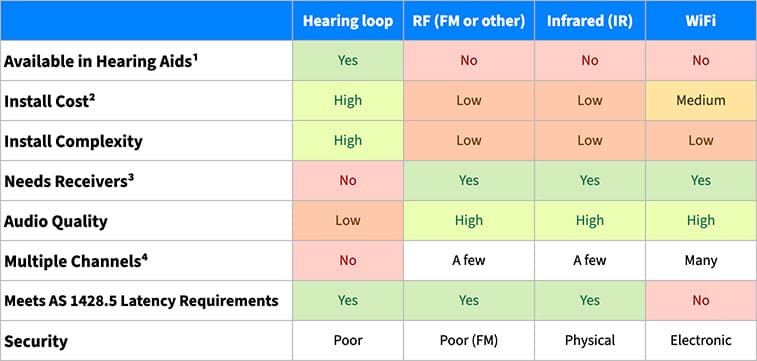
[1] receiver can be built into hearing devices; many hearing aids are fitted with Telecoil to receive hearing loop signals
[2] equipment, materials and labour to install
[3] to comply with AS 1428.5
[4] for stereo, audio description, multiple languages, other applications; may require multiple transmitters
There’s no easy answer to the obvious question: “Which technology is best?” Each has strengths and weaknesses. It’s notable that, broadly speaking, the technology that’s simplest and easiest for users (hearing loops) is the most costly and complex to install.
AURUACAST AS HEARING AUGMENTATION
Let’s consider the Auracast advantages (as a hearing augmentation technology) from three points of view: the end-user, the venue and the installer.
Auracast – end user perspective:
At a recent Auracast event (presented by hearing aid powerhouse GN Hearing), representatives from Hearing Australia (the federal government-owned body that provides support services to a diverse group of people impacted by hearing impairment) explained some of the advantages of Auracast for their clients. These include:
- integrated: Auracast can be built into a hearing aid (the hearing aid is an Auracast Receiver)
- cost-effectiveness: hearing devices incorporating Auracast Receivers are no more expensive than devices that include a Telecoil (to receive hearing loop signals)
- size: the component parts of Auracast Receivers are smaller than Telecoils – so a hearing device that includes an Auracast Receiver can be smaller than a device that receives the signal from a hearing loop
- battery flexibility: the larger size of a Telecoil sometimes precludes the use of rechargeable batteries in hearing devices – forcing users to wear a device that requires disposable batteries; the smaller size of the Auracast Receiver components does not prevent the use of rechargeable batteries
- sound quality: Auracast will generally have lower background noise, wider frequency response and greater dynamic range compared to hearing loops
- stereo, multiple channels
Some hearing aid manufacturers are already shipping devices that include Auracast Receivers. Cochlear’s latest Sound Processors promise imminent Auracast Receiver capability for users of cochlear implants.
The weight of advantages for hearing device users will undoubtedly see wide Auracast adoption across the spectrum of device manufacturers.
AURACAST: VENUE PERSPECTIVE
AS 1428.5 was written before Auracast was fully defined and commercialised. Until the Standard is revised to specifically cater for Auracast systems, such systems will fall under the scope of the ‘receiver systems’ provisions.
In simple applications (single audio channel in a space), Auracast (for the time being) will operate in much the same manner as existing receiver systems. Venues will be required to maintain a fleet of receivers to lend to users who don’t have an Auracast Receiver.
Over time, utilisation of the dedicated Auracast receivers will likely reduce as
- hearing devices increasingly have Auracast Receivers built in
- users connect to the Auracast Transmitter using consumer electronics products with Auracast Receivers built in (wireless ear buds and headphones)
The multi-channel capabilities of Auracast will allow venues to use the technology put in place to meet hearing augmentation requirements for additional applications such as:
- audio description of program content
- multiple languages (language tracks in movies, or simultaneous interpretation in meetings and conferences)
- one-way communications to staff and security
- flexible placement of fill or overflow-area loudspeakers
And remember: as Auracast becomes more common in consumer electronics products and hearing devices, the demand for venue-owned and -maintained Auracast Receivers will diminish. Added-value audio content will be able to delivered more and more widely with cost and management complexity reducing over time.
AURACAST: INSTALLER PERSPECTIVE
Auracast will be (already is!) easy and cost effective to install.
Manufacturers offer two distinct system architectures:
- all-in-one: audio connected directly to the transmitter
- remote transmitter: audio connected to a ‘head-end’ device in equipment rack, with transmitter at remote location connected by Cat cable
and integrators will choose based on the particular requirements of a project.
Transmitter location is pretty flexible. Direct line of sight to receivers is not required (contrast with infrared systems), so installation can be in a lighting grid, above (or attached to) ceiling tiles or on a wall. Connecting to the transmitter might be as simple as running a Cat cable from the equipment rack.
Early generation dedicated Auracast Receivers (which include Auracast Assistant functions) look and feel a lot like the receivers used with infrared, RF and WiFi systems. Size is similar. Charging docks are similar. Connectivity to headphones and neck loops is similar. Training and handover documentation should be broadly similar.
At this early stage of Auracast’s market deployment, the electronic hardware (transmitters and dedicated receivers) is significantly more expensive than the infrared and RF equivalents.
Considering equipment and installation costs together:
- Auracast systems are currently more expensive than infrared and RF systems
- Auracast systems are currently less expensive than hearing loop systems
HEARING AUGMENTATION SUMMARY
Auracast appears to be positioned as something of a Goldilocks technology: it gets things ‘just right’ by offering advantages for users, venues and installers.
Users will be able to wear smaller devices with ‘receivers built in’. Compared to hearing loops, Auracast audio quality will be better (and stereo), and there will be access to other channels (languages, description, etc.).
Venues will offer users superior audio quality, and access to other added-value audio services. As Auracast becomes more widely available in consumer electronics products, more and more users (not just those with hearing devices) will be able to access the Auracast audio using their own devices.
And for integrators, Auracast is easy to install and set up. No longer will Project Managers be sweating at night worrying about ‘other trades’ cutting the carefully installed hearing loop cables!
Let’s add Auracast to the hearing augmentation technology table that appeared earlier in the article:
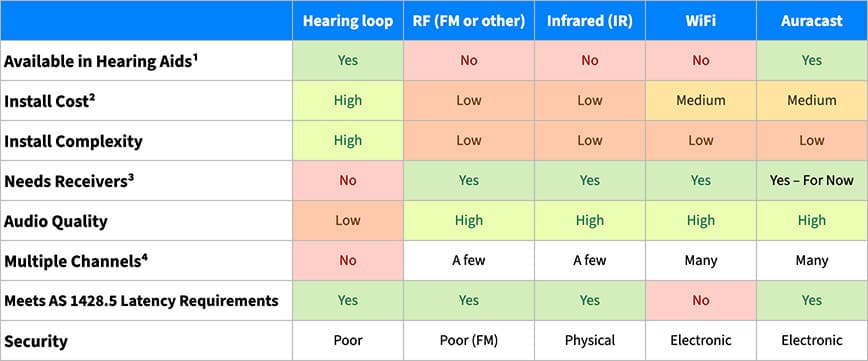
[1] receiver can be built into hearing devices; many hearing aids are fitted with Telecoil to receive hearing loop signals; penetration of Auracast in hearing devices is expected to increase rapidly
[2] equipment, materials and labour to install
[3] to comply with AS 1428.5; as Auracast penetration in hearing devices increases, justification of requirement for receivers diminishes
[4] for stereo, audio description, multiple languages, other applications; may require multiple transmitters
Good new technology – and Auracast is good new technology – follows a well-trodden path:
- as production volume grows and designs mature, prices decline
- as the benefits are widely recognised, adoption increases
The real-world implications for Auracast are easy to foresee:
- Auracast will be preferred by AV integrators and venues. It will be increasingly cost-effective, simple to install and easy to manage
- Auracast will be preferred by people with hearing disabilities. It offers great audio performance and can be built into hearing devices
READING THE AURA
If I had to make some predictions around the adoption of Auracast and its future, it’d be something like this:
- Auracast adoption will be driven by more than just large-area hearing augmentation applications in venues and public spaces. End users will choose Auracast for use in the home and on the road. Penetration in hearing devices will likely exceed that of Telecoils (for hearing loops), and the change will happen quickly
- Auracast-enabled consumer ear buds are already widely available from big name brands such as Google, Sennheiser, JBL and Sony. Apple hasn’t rolled out yet, but is ‘super excited … to see … how it [Auracast] can be implemented within our technology’. There’s an existing (and growing) community of owners ready to discover and use Auracast
- Users won’t need a latest generation phone (with Auracast Transmitter capability and Auracast functions embedded in the Operating System) to take advantage of Auracast audio in a venue. Remember: the Auracast Transmitter broadcasts directly to the Auracast Receiver (hearing aid, cochlear implant, ear bud, headphone). If an Auracast Assistant is required to choose between multiple Auracast channels in a space, an application can run on an older Android phone or even Apple phone
- Auracast is not an expensive technology. It will be widely deployed in millions (probably billions) of phones, ear buds, headphones, speakers and so on. We should expect to see it included very quickly in basic meeting room technologies such as sound bars, video bars, DSP systems, controllers, room hubs, etc. Inclusion in these products will greatly simplify compliance with hearing augmentation requirements in meeting spaces of all sizes
- Under the Building Code and Australian Standard AS 1428.5 Communication for people who are deaf or hearing impaired (the Standard), hearing augmentation systems using hearing loops don’t need to be supplied with a fleet of dedicated receivers. The Standard anticipates that receivers for hearing loops are built into users’ hearing devices
- Receiver systems (as defined in the BCA and the Standard) must include a fleet of receivers. At present, an Auracast system would be considered a receiver system, and would require a fleet of dedicated receivers
- Given that one of the significant benefits of Auracast is that Auracast Receivers can be built into hearing devices, there’s an obvious need for manufacturers and distributors to get involved in seeing Auracast incorporated in future editions of the BCA and the Standard on the same basis as hearing loops: no receivers required!
BUILDING HYPE
Auracast is an exciting new audio technology. It’s based on inexpensive components that are easily incorporated into products across the signal chain (Auracast Transmitters and Auracast Receivers).
Hearing augmentation is likely to be Auracast’s first application in the ProAV markets – and Auracast is a great technology for hearing augmentation – but it won’t be the last. The blend of key capabilities (broadcast, multi-channel, open or secure) will drive innovative applications across the industry.
You might not have thought much about (or even heard of) Auracast before today. You’ll be hearing much more in the months to come… the hype is building. And it’s justified.

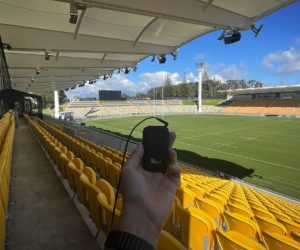
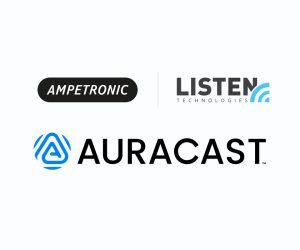


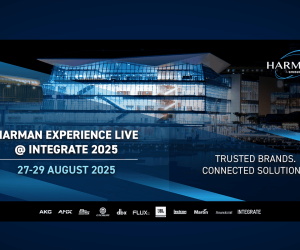
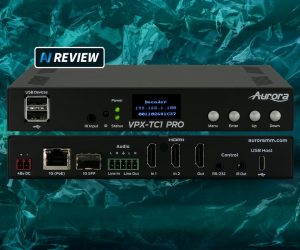
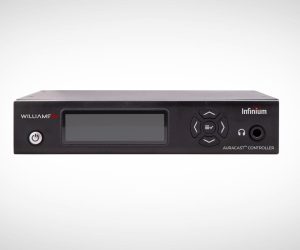
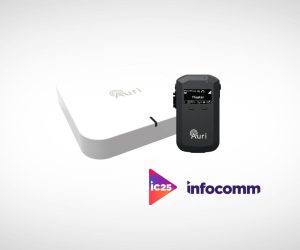
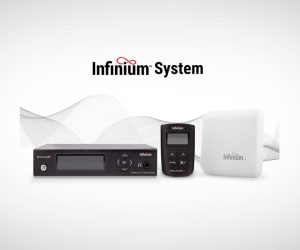

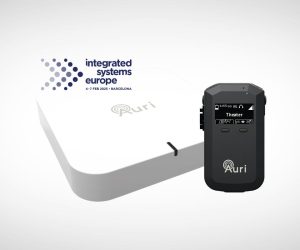
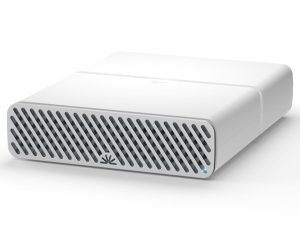


RESPONSES